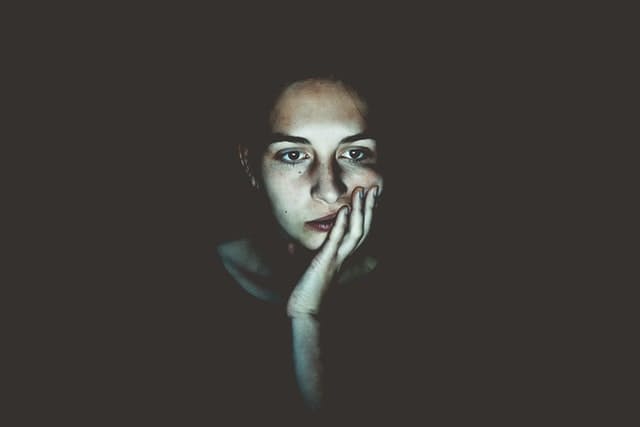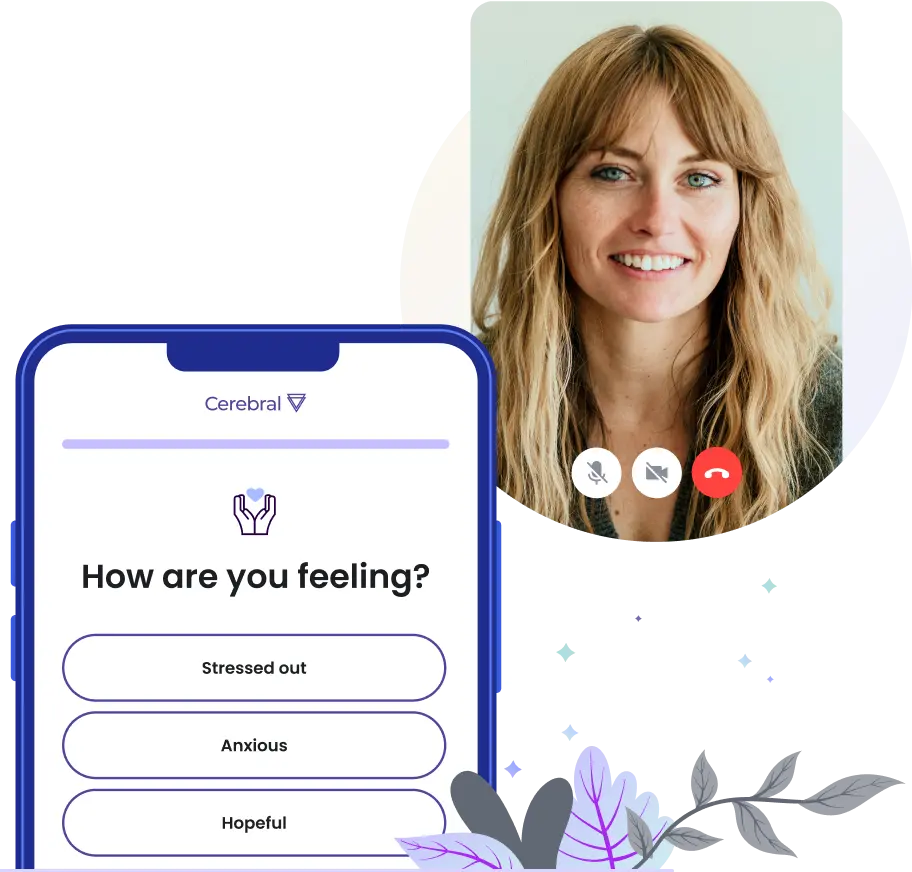Anxiety Disorders—Here’s What You Should Know
Fear and anxiety are natural human emotions. Despite how uncomfortable they may feel, they can be helpful however, by alerting a person to potential harm or danger. Some level of fear and anxiety is normal and not all feelings of anxiety point to a disorder. But excessive, ongoing and irrational fear and anxiety can have negative consequences on a person’s well-being by interfering with everyday functioning and ultimately decreasing a person’s quality of life.
Anxiety disorders are some of the most common mental disorders. They affect almost 30% of adults at one point or another throughout their lifetime. The good news is these are treatable conditions. They can be addressed through various treatment methods, medication or a combination. If managed properly, diagnosed individuals can improve their quality of life.

Types of Anxiety Disorders
Please keep in mind this is not a comprehensive list of all types of anxiety disorders. We have shortlisted five recognized forms and physical symptoms of anxiety disorders.
1. Generalized Anxiety Disorder or GAD
GAD is characterized by excessive and persistent worry that is often difficult to control. A hallmark symptom of GAD is a persistent feeling of dread. This can make it difficult, or even impossible, to function in everyday life. This is not the same as the passing worry or anxiety that’s felt in stressful situations, which dissipates once the source of stress is gone.
Those with GAD can feel recurring, overwhelming anxiety for a prolonged period. For some, it’s for months but for others it’s years. Typical symptoms of GAD include:
- General restlessness
- Feeling exhausted and irritable
- Having difficulty concentrating
- Muscle tension
- Uncontrollable worry or anxiety
- Sleep problems, such as difficulty falling or staying asleep
2. Obsessive-Compulsive Disorder or OCD
There is a misconception that OCD is the need for high-level order and cleanliness. In fact OCD is characterized by recurrent intrusive thoughts, images or urges (obsessions) that can cause anxiety or distress and the subsequent compulsion a person feels to perform repetitive acts they feel need to be applied to the situation to achieve a sense of completeness.
People with OCD typically experience:
- Obsessions: recurring thoughts, mental images or urges. Oftentimes these symptoms can be disturbing in nature and are unwanted, causing a person anxiety or distress. Typically a person tries to ignore the symptoms by another thought or performing an action. Compulsions: repetitive behaviors or mentals acts, which are aimed at preventing or reducing anxiety or distress. Oftentimes, a person feels compelled to complete repetitive behaviors in response to an obsession. Some examples are hand washing, praying or repeating words.
Please know that not all habits or rituals are compulsions. There are instances when it’s rational to feel the need to repeat certain actions. The obsessions and compulsions felt by a person with OCD are uncontrollable and excessive, which is where the difference lies. The symptoms a person incurs can take up a significant amount of their time and interfere with daily life. They don’t feel any pleasure from feeling compelled to do certain things but instead may briefly feel relieved from anxiety.
3. Panic Attacks and Panic Disorder
Panic attacks are characterized by discrete episodes of intense fear that begin abruptly and last for several minutes to an hour. Panic disorder is characterized by a person experiencing recurrent untriggered panic attacks. Many psychiatric disorders can present with panic attacks; however, experiencing a rare panic attack does not mean you have a mood disorder.
The common symptoms of a panic attack include but are not limited to:
- Elevated heart rate
- Sweating
- Chest pain
- Trembling
- Feeling doomed or out of control
Those with panic disorders often work with a medical professional todetermine what triggers their episodes and how to avoid future panic attacks. Oftentimes this is accomplished by avoiding certain places, behaviors or situations which are likely to be triggering and potentially anxiety producing.
4. Post-Traumatic Stress Disorder or PTSD
PTSD can occur in individuals who experience a traumatic event. This may include but is not limited to sexual assault, domestic violence, combat, physical injuries, medical illness and childhood trauma.
It can be natural to feel fear during or after a traumatic situation. As mentioned, fear and anxiety might be helpful in situations where there is perceived danger as they may trigger the “fight or flight” response, which is meant to protect a person from harm. PTSD though, is much more severe.

PTSD symptoms can often present as:
Re-experiencing symptoms: a person can re-live the event through frightening thoughts, flashbacks and dreams. Words, things or circumstances that remind them of the event can be triggers.
- Avoidance symptoms: a person may go out of their way to avoid reminders of the event. Examples of these may include avoiding places or suppressing thoughts related to the event.
- Arousal/reactivity symptoms: a person may find themself on edge, stressed or angry. They may have difficulty doing everyday tasks like eating, sleeping or focusing. These symptoms include being jumpy, having difficulty falling/staying asleep or feeling tense.
- Cognition and mood symptoms: a person may feel detached or alienated from loved ones. They may have difficulty recalling details about the traumatic event. They might experience negative thoughts about themselves or others, have distorted feelings of blame or guilt or lose interest in hobbies.
It’s natural to experience short-term symptoms after going through a traumatic experience but most people recover over time. For those who experience symptoms that interfere with their ability to function, a consultation with a medical professional might be beneficial.
5. Social Anxiety Disorder or Social Phobia
Social anxiety or social phobia may present as an excessive and overwhelming self-consciousness and anxiety in everyday social circumstances. It can involve a fear of being watched or judged by other people. This may be limited to a specific situation, like drinking or eating in front of others. Sometimes, in the severest form, it can impede a person from interacting with others.
Signs of social anxiety disorder may include but are not limited to:
- Trembling or sweating.
- Elevated heart rate.
- Stomachache.
- Body tension.
- Difficulty making or maintaining eye contact.
- Difficulty being around strangers.
- Fear of people watching or judging them.

It’s natural to feel nervous in certain situations, particularly ones that are new. But social anxiety disorders are recurring and excessive to the point that symptoms may disrupt an individual’s relationships and interfere with their ability to function.
Causes of Anxiety Disorders
PTSD can be a result of traumatic experiences or events. Research indicates that genetics and environmental factors may increase a person’s likelihood of developing other anxiety disorders. General risks may include feeling distressed or nervous in new situations during childhood, a history of anxiety disorders and other mental disorders in biological relatives, and exposure to stressful or negative environments.
Certain health conditions may aggravate anxiety disorders. Caffeine and other substances can have an impact, too.
Types of Anxiety Medicines
Healthcare providers may prescribe various medications to manage anxiety disorders. Common types of anxiety medicines include antidepressants, anti-anxiety medication or beta-blockers.
Other types of treatment can also help to manage anxiety. These can include various forms of cognitive behavioral therapy or CBT. CBT empowers individuals to be their own “therapist.” It teaches healthy coping mechanisms and different ways of thinking and takes place with a counselor or therapist. CBT may include psychotherapy (or “talk therapy”) or exposure therapy, depending on what your provider thinks is the best plan.
Often it can be confusing as to who can prescribe medication in a treatment setting. Psychiatrists and primary mental health nurse practitioners are medical experts who diagnose and treat mental and emotional conditions, which may include prescribing medication. A therapist or counselor cannot prescribe medication but you may benefit from their services just as much.
If you want more information on anxiety and how to begin your journey of mental and emotional wellness with, check out the services offered by Cerebral.
Take our free online anxiety test to see if you could benefit from anxiety treatment.

Relationship Anxiety: Understand the Signs and Ways to Cope

Anxiety and Memory Loss

Experts Recommend Anxiety Screening for Those 19-65

Call 911 if you’re having a
mental health emergency
Text Home to 741-741 if you're in emotional
distress and need immediate support
Call or text 988 Suicide &
Crisis Lifeline. Chat service
is available at 988lifeline.org.